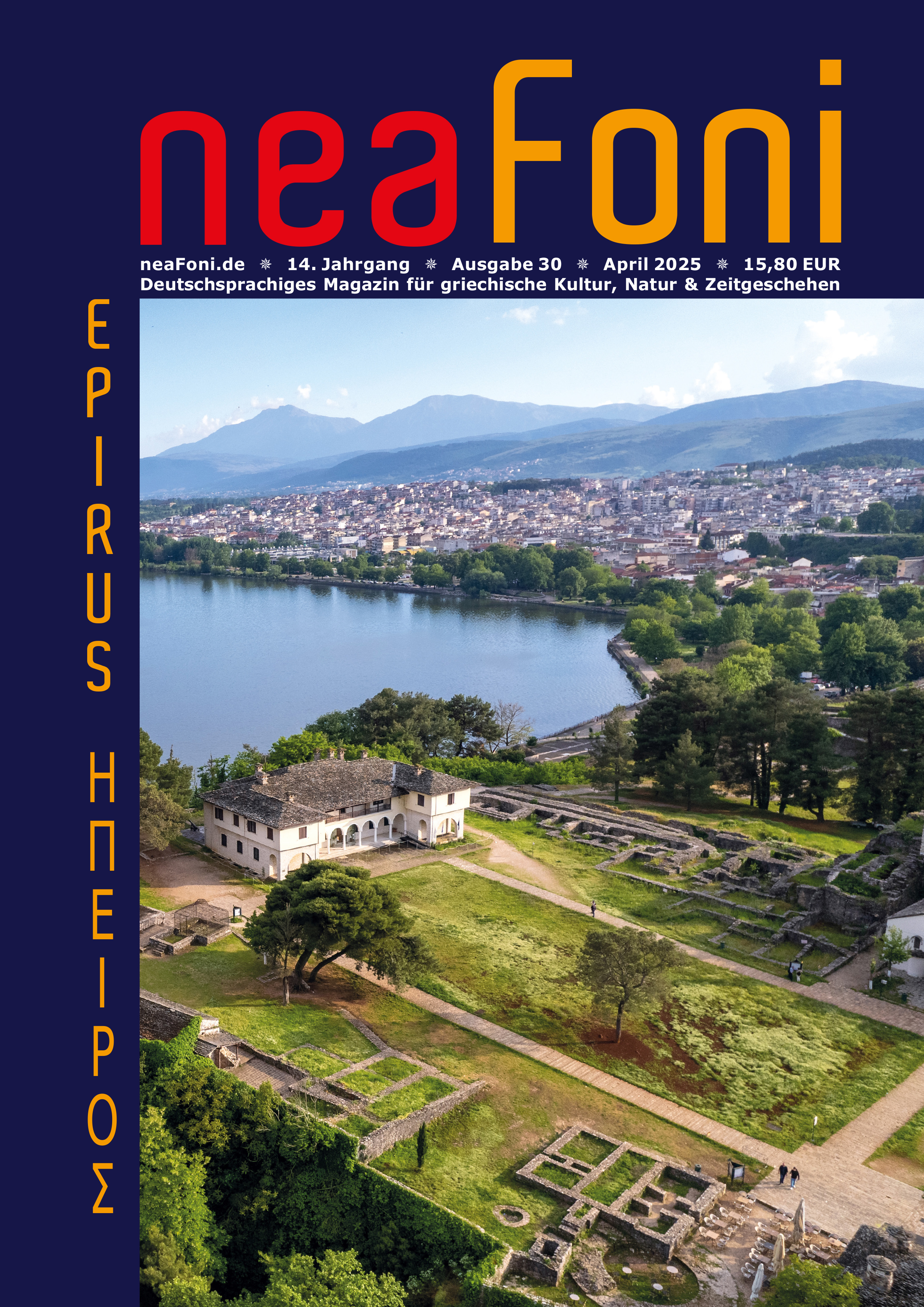Wer in seinem Griechenlandurlaub das Glück hatte, eine Theatervorstellung in der historischen Kulisse von Epidauros zu erleben, schwärmt von einem unvergesslichen Abend. Doch die Frage der Nutzung der antiken Theaterruinen für Aufführungen hat lange Zeit Archäologen und Kulturleute gespalten. Denkmalpflegerische und kommerzielle Interessen prallten heftig aufeinander. Dabei kostete es nicht geringe Anstrengungen, wenigstens das historisch bedeutsame Dionysos-Theater in Athen und das Theater im Heiligtum von Delphi in ihrer Bausubstanz unangetastet zu lassen und von weiterer Nutzung freizuhalten.
Gerade in Delphi gab es seit den 20er Jahren Pläne - zum Beispiel vom Dichter Angelos Sikelianos und seiner Frau Eva Palmer –, nach dem Vorbild der Olympischen Spiele Menschen aus vielen Ländern zu einer großen Festversammlung zusammen zu rufen. Der Orakelsitz des Apollon als Zentrum der klassischen Welt bot sich für ein Festspiel an. Im Jahr 1927 fand tatsächlich ein zweitägiges Fest statt mit einem Programm, das die geistige Freiheit propagieren sollte. Es war ein Versuch, an antike Vorbilder anzuknüpfen und zugleich eine Einheit von Vergangenheit und Gegenwart zu schaffen. Dies gelang mit der Aufführung der Tragödie "Der gefesselte Prometheus" von Aischylos, kombiniert mit byzantinischer Musik in der Vertonung der Chöre und lebendiger Volkskultur in den Reigentänzen und selbst gewebten Kostümen, gespielt im ursprünglichen, offenen Theater von Delphi.
Einen noch größeren Erfolg feierten die Delphischen Festspiele im Mai 1930 mit der Wiederholung des "Prometheus" und zusätzlich der Tragödie "Die Schutzflehenden" ebenfalls von Aischylos. Die aktuelle Frage des Asylgewährens sowie die aufwendige Inszenierung mit einem Chor von 50 Mädchen machten das Festspiel so erfolgreich, dass es im gleichen Monat zweimal wiederholt wurde.
Eine Fortsetzung des idealistischen Unternehmens gab es jedoch nicht. Ein Grund dafür lag in finanziellen Schwierigkeiten, ein anderer in der sich verdüsternden weltpolitischen Atmosphäre. Ein Fest, das für Frieden, individuelle Freiheit und Völkerverständigung warb, fand zwischen Kommunismus und Faschismus keinen Platz mehr.
Eine Fülle von Anregungen ging aber von diesem Festspiel in Delphi aus. Zum Einen wurde einem international einflussreichen Publikum vor Augen geführt, welche Kraft und Aktualität den antiken Dramenstoffen innewohnt. Was außerhalb Griechenlands bereits erprobt war und auf wachsendes Interesse stieß - Goethe brachte Mitte des 18.Jahrhunderts am Weimarer Hoftheater "Antigone" und "König Ödipus" sowie die "Vögel" des Aristophanes auf die Bühne – war nun endlich an seinen Ursprungsort zurückgekehrt.
Die Athener erlebten sechs Jahre später erstmals die Inszenierung einer Tragödie in einem antiken Theater: Dimitris Rondiris, Leiter des neugegründeten Nationaltheaters, brachte im Odeion des Herodes Atticus die "Elektra" von Sophokles heraus. Zwei Jahre später, 1938, führte Rondiris dasselbe Stück in Epidauros auf. In dem seit der Antike unberührten Theater gelang es ihm, vor 3500 Zuschauern die "Elektra" unter antiken Spielbedingungen zu wiederholen. Endlich konnten die Griechen unter derselben Sonne Attikas, auf demselben geheiligten Boden die alten Tragödien in historisch getreuer Nachbildung aufleben lassen.
Erst im Jahr 1954 konnte in Epidauros dieser Traum wieder in Erfüllung gehen, mit der Aufführung des "Hippolytos" von Euripides, abermals unter der Regie von Rondiris. Damit wurde das Signal gegeben für die Etablierung einer Tradition alljährlicher Festspiele, bestritten ausschließlich vom Nationaltheater Athen. Erst seit 1975 treten auch andere Ensembles auf, wie das berühmte Theatro Technis von Karolos Koun und das Amphi-Theatro von Spyros Evangelatos.
Beide Regisseure schlugen neue Wege der szenischen Präsentation ein und traten mit modernen Inszenierungen in den Freilichttheatern hervor. Karolos Koun beeindruckte mit Änderungen in der Chorführung, indem er den klassischen Aufführungsstil verwarf und statt dessen mit folkloristischen Elementen arbeitete, so in seiner berühmten Inszenierung der aristophanischen "Vögel" 1975. Evangelatos bevorzugt demgegenüber die antike Tragödie, bemüht sich aber, das kanonische Repertoire durch neue Stoffe zu erweitern. So führte er 1979 in Athen nicht die euripideische "Medea", sondern die des Seneca auf. In Epidauros wagte er 2002 eine freie Rekonstruktion der Tragödie "Hypsipyle" von Euripides.
Während in Epidauros fast ausschließlich antike Dramen auf dem Spielplan stehen, überwiegen im Athener Odeion des Herodes Atticus musikalische Darbietungen. Seitdem die Südseite der Akropolis zur verkehrsberuhigten Grünanlage umgewandelt und dadurch der Stadtlärm schlagartig reduziert wurde, können hier Musikliebhaber jeder Richtung herrliche Konzerte unter dem Athener Sternenhimmel genießen.
Die allsommerlichen Aufführung in Epidauros und Athen werden heute von Theatertruppen aus ganz Griechenland und aus Zypern bestritten. Im Rahmen der Kulturolympiade 2001 – 2004 kammen auch Theater aus dem Ausland mit Gastspielen hinzu.





